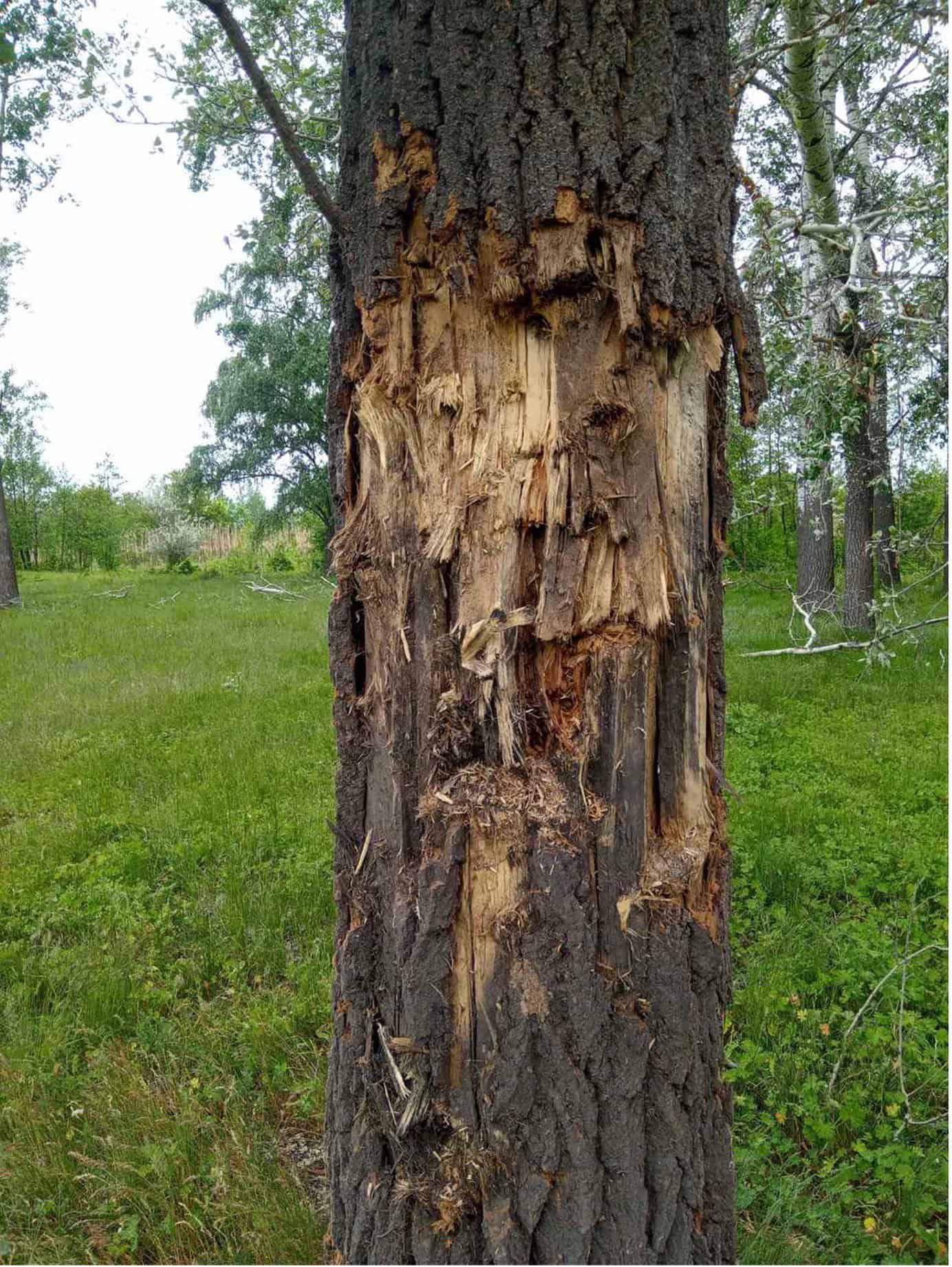Russian war against Ukraine´s nature. Part 2
Russian war is also happening against Ukraine endangered biodiversity of protected nature reserves. Maria Feduruk, researcher from Ukraine shares with us Case studies of Chornobyl Radiation and Ecological Biosphere Reserve; Desniansko-Starohutskyi, Holosiivskyi, and Hetmanskyi National Nature Parks.
Please also read: Russian war against Ukraine´s nature. Part 1
The Hetmanskyi NNP is situated in the Southeast of the Sumy area and stretches from the border with Russia to Poltava region borders. During the first five weeks of Russia’s full-scale invasion of Ukraine, the territory of the park was the scene of fierce fighting between the Russian troops, advancing on Kyiv and the Defence Forces of Ukraine. The large part of it (46.3% that is ~11.000 ha), including the administration in Trostianets, was under occupation. Maintenance and repair of military equipment in field camps led to the area’s pollution with fuels and lubricants, used oils, and antifreeze and organic solvents. Territories close to the border with Russia suffered from active hostilities, direct clashes, artillery fire, aerial bombardment, and rocket attacks, which resulted in fires. Even after the liberation of the park, part of its territory has been under regular shelling. Nearly 15% of the reserve was classified as potentially mine-contaminated. Ichthyofauna of the Vorskla River was likely to be indirectly affected, namely the species included in the Red Book of Ukraine.
The Holosiivskyi NNP is the only one in Ukraine and one of the few national parks in the world located entirely within the boundaries of a city. It is located in the city of Kyiv, in its southern and western parts and, hence, faced a high pressure of recreational activities in the pre-war period. Due to its bordering with settlements and frequent city dwellers’ visits, there have been a lot of amateur observations recorded in the Global Biodiversity Information Facility (GBIF). As part of the offensive on Kyiv, Russian troops tried to surround and besiege the Ukrainian capital Kyiv from the west. As a result, areas on the border of the NNP were most affected. Along with territory mining, the Holosiivskyi NNP faced a mechanical impact, due to the construction of defence infrastructure. Part of the park, namely Pushcha-Vodytsia Forest, was shelled, which caused habitat destruction in all directions of the shock wave propagation.

Conclusions
The difficulty of assessing environmental impacts caused by military actions in Ukraine regards critical causal relationships. First of all, data on the state of pre-war (until 24 February 2022) biodiversity within the Desniansko-Starohutskyi NNP and the Hetmanskyi NNP are incomplete. Even where such information is available (the Chornobylskyi REBR and the Holosiivskyi NNP), it is either significantly fragmented or lacks proper spatial (geocoded) distribution, which considerably reduces its value. Secondly, the reconstruction of environmental losses caused by hostilities using incomplete previous and actual data (due to limited access related to unexploded ordnance or mines) is a difficult and sometimes impossible task. Now, only a general assessment of changes in landscape structure, including vegetation cover, can be considered.
In addition to the loss of diversity, special attention should be paid to the organization of monitoring of alien species and, first of all, plants, since it is highly probable that the occupation army, on its equipment and personnel’s clothing, brought the seeds of alien plants, the species distribution of which, for example, may be limited to Eastern Siberia, Altai, the Urals, etc.
With regard to the Chornobylskyi REBR, Desniansko-Starohutskyi NNP, and Hetmanskyi NNP, all the restoration efforts should start with mining clearance as most of their territories contain land mines, which limit not only impacts assessment on-site but also the implementation of any recovery measures. Part of the Chornobylskyi REBR, Desniansko-Starohutskyi NNP, and Hetmanskyi NNP park’s land falls under the 2-km extraction zone along the border to organize a border strip. Limited access due to the border zone protection and organization of mine barriers will have a negative impact on biodiversity, especially on large carnivorous and artiodactyl mammals. Some parts of research nature protection areas could lose the environmental protection value due to the dramatic impacts, as a result, its preservation status should be transferred to the less impacted territories with similar habitats if they exist (in case of Nature reserves). All researched areas have a strong need for material and non-material resources, including financing of nature conservation and research, provision of fuel and lubricants, and equipment for research.
The material was prepared and photo share by Maria Fedoruk. Main photo: The Desniansko-Starohutskyi NNP, soil sample from crater made by artillery fire.
Credits
Walter Leal Filho, Maria Fedoruk, Joao Henrique Paulino Pires Eustachio, Anastasia Splodytel, Viktor Shparyk, Anatoliy Smaliychuk, Oleh Chaskovsky, Andrii Zamoroka.
If you want to support protected areas, described in the post, please contact Maria Fedoruk via email: Mariia.Fedoruk@haw-hamburg.de.
Discover more from European Wilderness Society
Subscribe to get the latest posts sent to your email.
